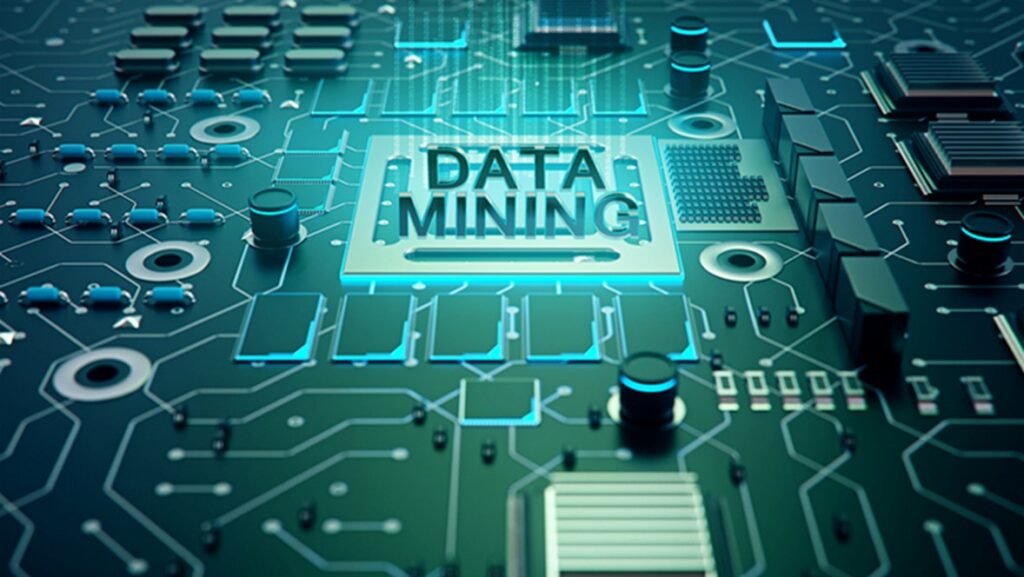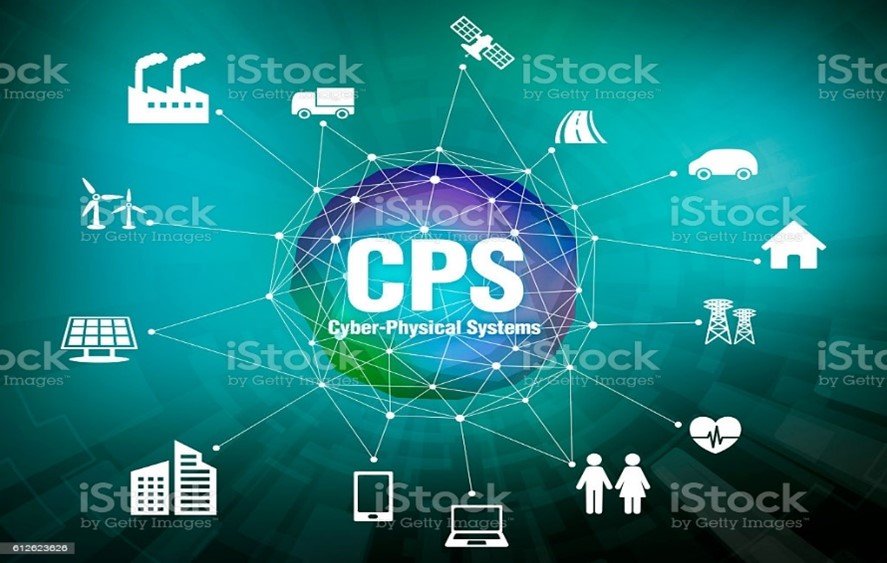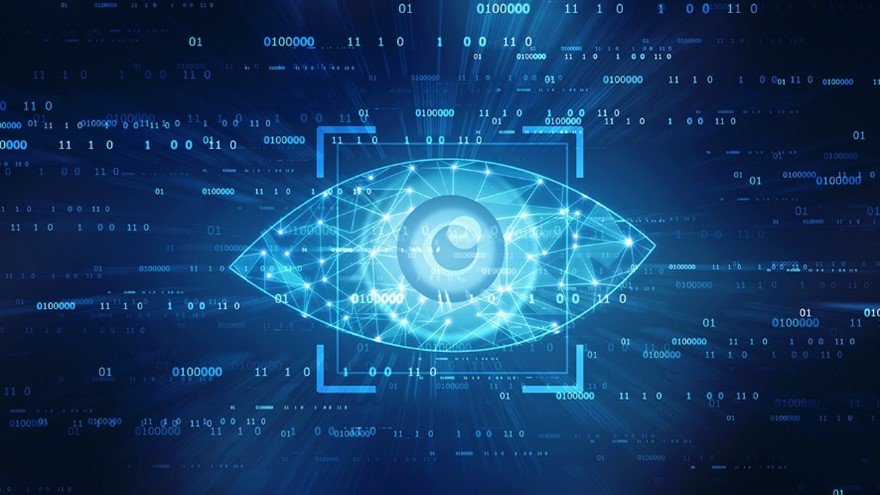By: P. Chaudhary, B. Gupta
- Artificial Intelligence and Robotics

Artificial Intelligence and Robotics [1, 2] field aims at developing computational system that are intelligent in decision making, planning, object recognition, and other complex computational tasks that require minimum human intervention. This field emphasizes upon the development of cognitive algorithms for a variety of domains including e-commerce, healthcare, transport, manufacturing, gaming, defense industry, logistics, to name a few. It includes the application of popular emerging technologies such as Deep leaning, machine learning, Natural language processing (NLP), robotics, evolutionary algorithms, statistical inference, probabilistic methods, and computer vision. Some of the eminent research areas includes the following:
- Knowledge representation and reasoning
- Estimation theory
- Mobility mechanisms
- Multi-agent negotiation
- Intelligent agents
- Semantic segmentation
- Assistive robotics in medical diagnosis
- Robot perception and learning
- Motion planning and control
- Autonomous vehicles
- Personal assistive robots
- Search and information retrieval
- Speech and language recognition
- Fuzzy and neural system
- Intelligent embedded system in industries
- Object detection and capturing
- Intelligent information systems
2. Big Data Analytics

Big data analytics [3, 4] research field involves design and development of techniques/algorithms/frameworks to explore the large amount of data to fulfill organization’s objectives. This area includes mathematical, statistical and graphical approaches to mine useful knowledge patterns from heterogeneous raw data. It is one of the potential and emerging research domains as almost every organization is attempting to utilize available data to enhance their productivity and services to their customers. Some of the distinguished research areas are following:
- Predictive analysis
- Data capturing and transmission
- Parallel Data processing
- Uncertainty in data
- Data anonymization methods
- Data processing in distributed environment
- Privacy protecting techniques
- Semantic analysis on social media
- Intelligent traffic surveillance
- Topological data analysis
3. Biometrics and Computational Biology

This field embraces enormous potential for researchers as it amalgamates multiple research areas including big data, image processing, biological science, data mining, and machine learning. This field emphasizes on the designing and development of computational techniques for processing biological data [5, 6]. Some of the potential research areas includes:
- Structure and sequence analysis algorithms
- Protein structure anticipation
- Data modeling of scientific applications
- Virtual screening
- Brain image analysis using data mining approaches
- Design predictive models for severe disease analysis
- Molecular structure modeling and analysis
- Brain-machine interfaces
- Computational neuroscience
4. Data Mining and Databases

This field motivates research on designing vital methods, prototype schemes and applications in data mining and databases. This field ensembles all methods, techniques, and algorithms used for extracting knowledgeable information from the available heterogenous raw data [7, 8]. It enables classification, characterization, searching and clustering different datasets from wide range of domains including e-commerce, social media, healthcare, to name a few. This field demands parallel and distributed processing of data as it operates on massive quantity of data. It integrates various research domains including artificial intelligence, big data analytics, data mining, database management system, and bioinformatics. Some of the eminent research areas comprises as follows:
- Distributed data mining
- Multimedia storage and retrieval
- Data clustering
- Pattern matching and analysis
- High-dimensional data modeling
- Spatial and scientific data mining for sensor data
- Query interface for text/image processing
- Scalable data analysis and query processing
- Metadata management
- Graph database management and analysis system for social media
- Interactive data exploration and visualization
- Secure data processing
5. Internet of Things (IoTs)

Internet of Things has transformed the lives of people through exploring new horizons of networking. It connects physical objects with the internet as per the application to serve the user. This field carries enormous potential in different research areas related to the IoT and its interrelated research domains [9, 10]. These areas include as follows:
- IoT network infrastructure design
- Security issues in IoT
- Architectural issues in Embedded system
- Adaptive networks for IoT
- Service provisioning and management in IoT
- Middleware management in IoT
- Handling Device Interoperability in IoT
- Scalability issues in IoT
- Privacy and trust issues in IoT
- Data storage and analysis in IoT networks
- Integration of IoT with other emerging technologies such as fog computing, SDN, Blockchain, etc.
- Context and location awareness in IoT networks
- Modeling and management of IoT applications
- Task scheduling in IoT networks
- Resource allotment among smart devices in IoT networks.
6. High-Performance Computing

This field encourage the research in designing and development of parallel algorithms/techniques for multiprocessor and distributed systems. These techniques are efficient for data and computationally exhaustive programs like data mining, optimization, super computer application, graph portioning, to name a few [11, 12]. Some of the eminent research challenges includes the following:
- Information retrieval methods in cloud storage
- Graph mining in social media networks
- Distributed and parallel computing methods
- Development of architecture aware algorithms
- Big data analytics methods on GPU system
- Designing of parallel algorithms
- Designing of algorithms for Quantum computing
7. Blockchain and Decentralized Systems

This field [13, 14] revolutionize the digital world through processing network information without any central authority. This field is an emerging computing paradigm and motivates the design and development of algorithms that operate in decentralized environment. These techniques provide security, robustness and scalability in the network. Some of the eminent research areas includes the following:
- Enhancing IoT security using blockchain
- Precision agriculture and blockchain
- Social blockchain networks
- Blockchain based solutions for intelligent transportation system
- Security and privacy issues in blockchain networks
- Digital currencies and blockchain
- Blockchain and 5G/6G communication networks
- Integration of cloud/fog computing with blockchain
- Legislation rules and policies for blockchain
- Artificial Intelligence for blockchain system
8. Cybersecurity

With the development of new technology such as IoT, attackers have wider attack surface to halt the normal functioning of any network. Attackers may have several intentions to trigger cyber-attacks either against an individual person, organization, and/or a country. Now-a-days, we are living in a digital world where everything is connected is to the internet, so we are prone to some form of security attacks [15, 16]. This field carries massive potential for research on different techniques/methods to defend against these attacks. Some of the emerging research areas comprise the following:
- Intrusion detection system
- Applied cryptography
- Privacy issues in RFID system
- Security challenges in IoT system
- Malware detection in cloud computing
- Security and privacy issues in social media
- Wireless sensor network security
- Mobile device security
- Lawa and ethics in cybersecurity
- Cyber physical system security
- Software defined network security
- Security implications of the quantum computing
- Blockchain and its security
- AI and IoT security
- Privacy issues in big data analytics
- Phishing detection in finance sector
9. AI and Cyber Physical System

Specifically, Cyber physical system integrates computation and physical methods whose functionalities is determined by both physical and cyber component of the system. Research in this area motivates the development of tools, techniques, algorithms and theories for the CPS and other interrelated research domains [17, 18]. Research topics includes the following:
- Human computer interaction
- Digital design of CPS interfaces
- Embedded system and its security
- Industrial Interne to things
- Automation in manufacturing industries
- Robotics in healthcare sector
- Medical informatics
- AI, robotics and cyber physical system
- Robot networks
- Cognitive computing and CPS
10. Networking and Embedded Systems

This field [19, 20] encourages research on the designing of contemporary theories and approaches, effective and scalable methods and protocols, and innovative network design structure and services. These mechanisms improve the reliability, availability, security, privacy, manageability of current and future network and embedded systems. Research in this domain comprises of following topics:
- Cyber physical system
- Design of novel network protocols
- Cognitive radio networks
- Network security for lightweight and enterprise networks
- Resource allocation schemes in resource-constrained networks
- Network coding
- Energy efficient protocols for wireless sensor networks
- AI and embedded system
- Embedded system for precision agriculture
11. Computer Vision and Augmented Reality

Computer vision [21, 22] is a multidisciplinary field that make computer system to understand and extract useful information from digital images and videos. This field motivates the research in designing the tools and techniques for understanding, processing, extracting, and storing, analyzing the digital images and videos. It embraces multiple domains such as image processing, artificial intelligence, pattern recognition, virtual reality, augmented reality, semantic structuring, statistics, and probability. Some of the eminent research topics includes the following:
- Computer vision for autonomous robots
- Object detection in autonomous vehicles
- Object detection and delineation in UAVs network.
- Biomedical image analysis
- Augmented reality in gaming
- Shape analysis in digital images
- Computer vision for forensics
- Robotics navigation
- Deep learning techniques for computer vision
- Automation in manufacturing sector
- 3D object recognition and tracking
12. Wireless Networks and Distributed Systems

The research in this field emphasizes on the developments of techniques that facilitate communication and maintain coordination among distributed nodes in a network [23, 24]. It is a broad area that embraces numerous domains including cloud computing, wireless networks, mobile computing, big data, and edge computing. Some of the eminent research topics includes the following:
- Message passing models in distributed system
- Parallel distributed computing
- Fault tolerance and load balancing
- Dynamic resource allocation in distributed system
- Resource discovery and naming
- Low-latency consistency protocols
- Designing of consensus protocols
- Efficient communication protocols in distributed system
- Security issues in distributed networks
- Privacy and trust models
- Optimization of distributed storage
- Distributed and federated machine learning
References
[1] Wisskirchen, G., Biacabe, B. T., Bormann, U., Muntz, A., Niehaus, G., Soler, G. J., & von Brauchitsch, B. (2017). Artificial intelligence and robotics and their impact on the workplace. IBA Global Employment Institute, 11(5), 49-67.
[2] Kortenkamp, D., Bonasso, R. P., & Murphy, R. (Eds.). (1998). Artificial intelligence and mobile robots: case studies of successful robot systems. MIT Press.
[3] Dai, H. N., Wang, H., Xu, G., Wan, J., & Imran, M. (2020). Big data analytics for manufacturing internet of things: opportunities, challenges and enabling technologies. Enterprise Information Systems, 14(9-10), 1279-1303.
[4] Müller, O., Junglas, I., Vom Brocke, J., & Debortoli, S. (2016). Utilizing big data analytics for information systems research: challenges, promises and guidelines. European Journal of Information Systems, 25(4), 289-302.
[5] Waterman, M. S. (2018). Introduction to computational biology: maps, sequences and genomes. Chapman and Hall/CRC.
[6] Imaoka, H., Hashimoto, H., Takahashi, K., Ebihara, A. F., Liu, J., Hayasaka, A., … & Sakurai, K. (2021). The future of biometrics technology: from face recognition to related applications. APSIPA Transactions on Signal and Information Processing, 10.
[7] Zhu, X., & Davidson, I. (Eds.). (2007). Knowledge Discovery and Data Mining: Challenges and Realities: Challenges and Realities. Igi Global.
[8] Tseng, L., Yao, X., Otoum, S., Aloqaily, M., & Jararweh, Y. (2020). Blockchain-based database in an IoT environment: challenges, opportunities, and analysis. Cluster Computing, 23(3), 2151-2165.
[9] Stoyanova, M., Nikoloudakis, Y., Panagiotakis, S., Pallis, E., & Markakis, E. K. (2020). A survey on the internet of things (IoT) forensics: challenges, approaches, and open issues. IEEE Communications Surveys & Tutorials, 22(2), 1191-1221.
[10] Nižetić, S., Šolić, P., González-de, D. L. D. I., & Patrono, L. (2020). Internet of Things (IoT): Opportunities, issues and challenges towards a smart and sustainable future. Journal of Cleaner Production, 274, 122877.
[11] Hager, G., & Wellein, G. (2010). Introduction to high performance computing for scientists and engineers. CRC Press.
[12] Wang, G. G., Cai, X., Cui, Z., Min, G., & Chen, J. (2017). High performance computing for cyber physical social systems by using evolutionary multi-objective optimization algorithm. IEEE Transactions on Emerging Topics in Computing, 8(1), 20-30.
[13] Zheng, Z., Xie, S., Dai, H. N., Chen, X., & Wang, H. (2018). Blockchain challenges and opportunities: A survey. International Journal of Web and Grid Services, 14(4), 352-375.
[14] Nguyen, D. C., Ding, M., Pham, Q. V., Pathirana, P. N., Le, L. B., Seneviratne, A., … & Poor, H. V. (2021). Federated learning meets blockchain in edge computing: Opportunities and challenges. IEEE Internet of Things Journal.
[15] Tawalbeh, L. A., Muheidat, F., Tawalbeh, M., & Quwaider, M. (2020). IoT Privacy and security: Challenges and solutions. Applied Sciences, 10(12), 4102.
[16] Boubiche, D. E., Athmani, S., Boubiche, S., & Toral-Cruz, H. (2021). Cybersecurity Issues in Wireless Sensor Networks: Current Challenges and Solutions. Wireless Personal Communications, 117(1).
[17] Gupta, R., Tanwar, S., Al-Turjman, F., Italiya, P., Nauman, A., & Kim, S. W. (2020). Smart contract privacy protection using ai in cyber-physical systems: Tools, techniques and challenges. IEEE Access, 8, 24746-24772.
[18] Kravets, A. G., Bolshakov, A. A., & Shcherbakov, M. V. (2020). Cyber-physical Systems: Industry 4.0 Challenges. Springer.
[19] Duan, Q., Wang, S., & Ansari, N. (2020). Convergence of networking and cloud/edge computing: Status, challenges, and opportunities. IEEE Network, 34(6), 148-155.
[20] Wang, C. X., Di Renzo, M., Stanczak, S., Wang, S., & Larsson, E. G. (2020). Artificial intelligence enabled wireless networking for 5G and beyond: Recent advances and future challenges. IEEE Wireless Communications, 27(1), 16-23.
[21] Chen, C. H. (Ed.). (2015). Handbook of pattern recognition and computer vision. World Scientific.
[22] Esteva, A., Chou, K., Yeung, S., Naik, N., Madani, A., Mottaghi, A., … & Socher, R. (2021). Deep learning-enabled medical computer vision. NPJ digital medicine, 4(1), 1-9.
[23] Farahani, B., Firouzi, F., & Luecking, M. (2021). The convergence of IoT and distributed ledger technologies (DLT): Opportunities, challenges, and solutions. Journal of Network and Computer Applications, 177, 102936.
[24] Alfandi, O., Otoum, S., & Jararweh, Y. (2020, April). Blockchain solution for iot-based critical infrastructures: Byzantine fault tolerance. In NOMS 2020-2020 IEEE/IFIP Network Operations and Management Symposium (pp. 1-4). IEEE.
Cite this article:
P. Chaudhary, B. Gupta (2021) 12 Most Emerging Research Areas in Computer Science in 2021, Insights2Techinfo, pp. 1
FAQ on this topic
Artificial Intelligence and Robotics, Big Data Analytics, Biometrics and Computational Biology, Data Mining and Databases, Internet of Things (IoTs), High-Performance Computing, Blockchain and Decentralized Systems,Cybersecurity
Big data research field involves design and development of techniques/algorithms/frameworks to explore the large amount of data to fulfill organization’s objectives. Some of the distinguished research areas are following: Data capturing and transmission, Parallel Data processing,Data anonymization methods,Data processing in distributed environment
Artificial Intelligence field aims at developing computational systems that are intelligent in decision making, planning, object recognition, and other complex computational tasks that require minimum human intervention. Some of the eminent research areas includes the following: Knowledge representation and reasoning
Autonomous vehicles, Fuzzy and neural system, Intelligent information systems
Some of the eminent research areas comprises as follows:Distributed data mining, Multimedia storage and retrieval, Data clustering, Pattern matching and analysis, High-dimensional data modeling, Spatial and scientific data mining for sensor data.
The research areas in IoT include as follows: IoT network infrastructure design, Security issues in IoT,Architectural issues in Embedded system, Service provisioning and management in IoT, Middleware management in IoT